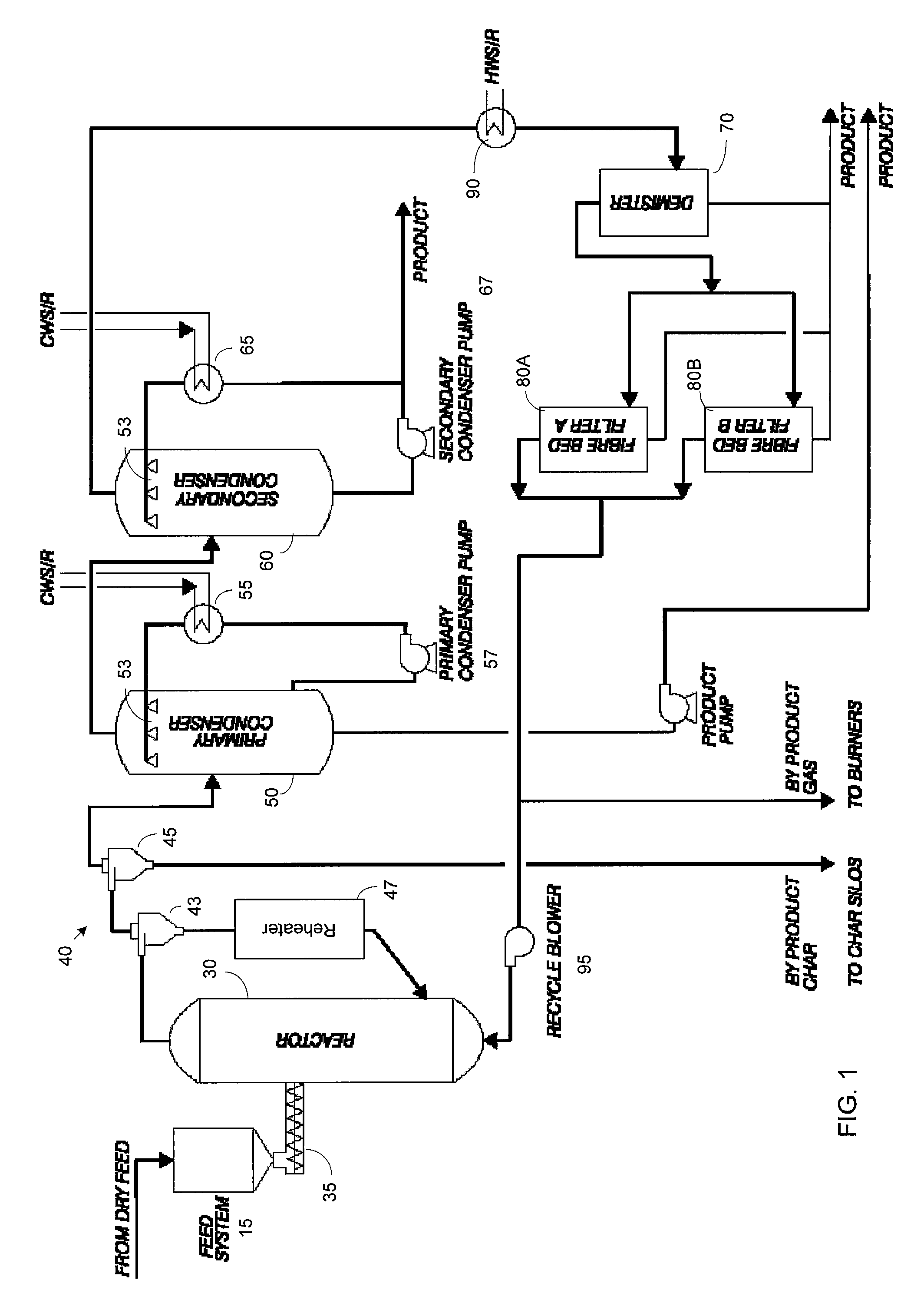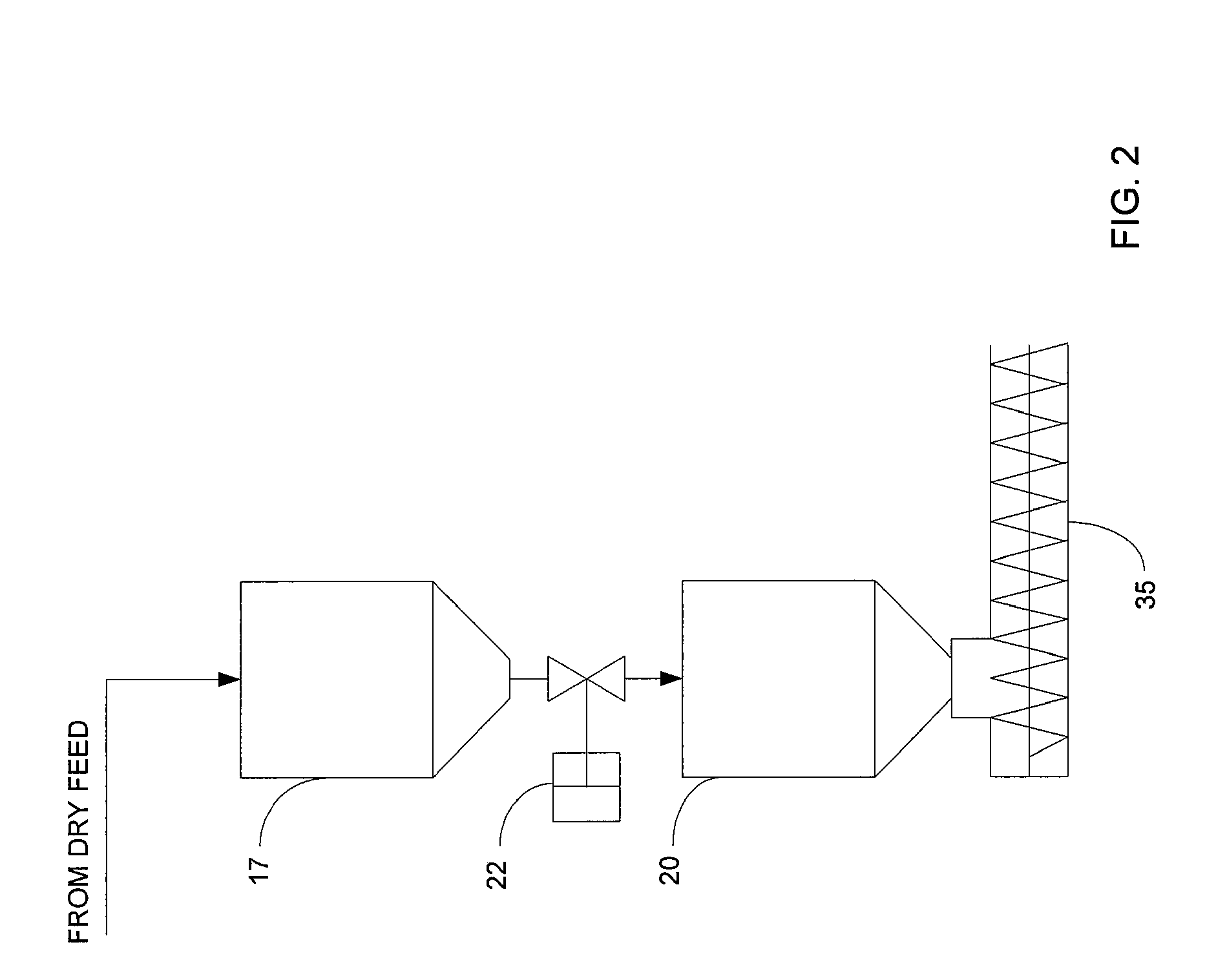Rapid thermal conversion of biomass
a biomass and thermal conversion technology, applied in the field of rapid thermal conversion of biomass, can solve the problems of high cost, low quality, and high yield of two-phase tar-aqueous mixture, and achieve the effect of improving the rapid thermal conversion process of biomass
- Summary
- Abstract
- Description
- Claims
- Application Information
AI Technical Summary
Benefits of technology
Problems solved by technology
Method used
Image
Examples
Embodiment Construction
[0019]FIG. 1 shows a rapid thermal conversion system 10 for converting biomass, e.g., wood, into high yields of liquid product according to an exemplary embodiment of the present invention.
[0020]Feed System
[0021]The feed system 15 is used to provide a regulated flow of solid biomass feedstock to the conversion system 10. Preferably, the biomass feedstock is a dry wood feedstock, which may be in the form of sawdust, but liquid and vapor-phase (gas-phase) biomass materials can be effectively processed in the rapid thermal conversion system using an alternative liquid or vapor-phase feed system. Biomass feedstock materials that may be used include, but are not limited to, hardwood, softwood, bark, agricultural and silvicultural residues, and other biomass carbonaceous feedstocks. Embodiments of the invention can also be applied to the conversion of other carbonaceous feedstocks including, but not limited to, plastics, polymers, hydrocarbons, petroleum, coal, and refinery feedstocks. Si...
PUM
| Property | Measurement | Unit |
|---|---|---|
| temperature | aaaaa | aaaaa |
| temperature | aaaaa | aaaaa |
| temperature | aaaaa | aaaaa |
Abstract
Description
Claims
Application Information
 Login to View More
Login to View More - R&D
- Intellectual Property
- Life Sciences
- Materials
- Tech Scout
- Unparalleled Data Quality
- Higher Quality Content
- 60% Fewer Hallucinations
Browse by: Latest US Patents, China's latest patents, Technical Efficacy Thesaurus, Application Domain, Technology Topic, Popular Technical Reports.
© 2025 PatSnap. All rights reserved.Legal|Privacy policy|Modern Slavery Act Transparency Statement|Sitemap|About US| Contact US: help@patsnap.com



